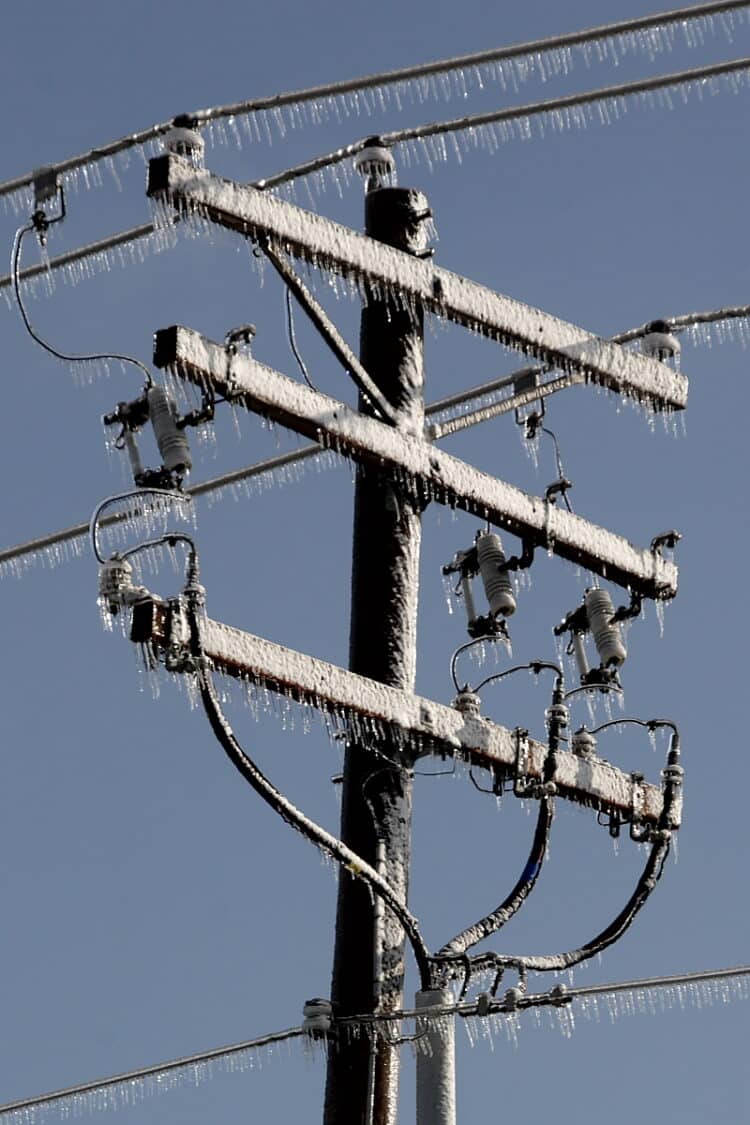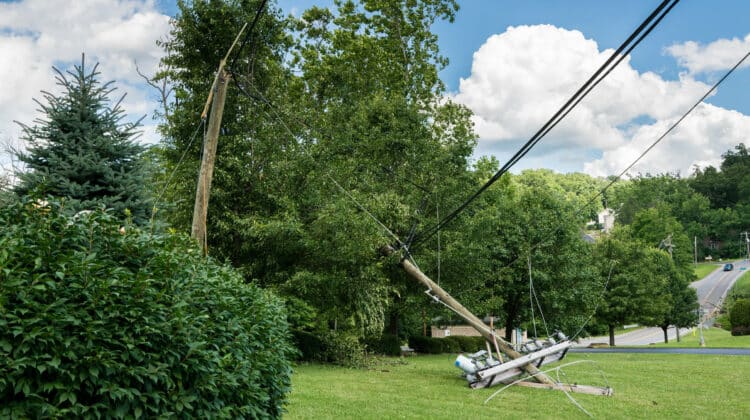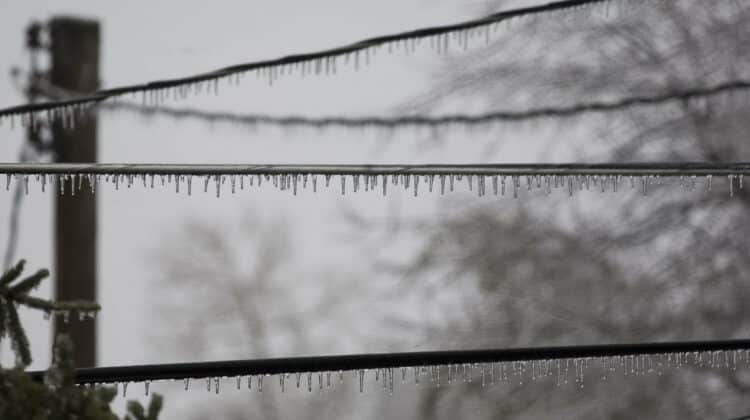
Nothing has the potential to knock you back into the stone age like a long-lasting power outage. Even power outages that happen for short amounts of time are inconvenient. They also pose a threat to those whose lives depend on electricity. Yet, scheduled electricity outages are necessary. And unplanned power failures are inevitable. This article shares with you everything on how to prepare for long term power outage.
But first:
Table of Contents
When to Expect a Power Outage
A power failure is possible in your area at any given moment. It could be city-wide, neighborhood-wide, or a partial electricity outage in your house.
It may be on your electricity provider’s schedule, or it may be random.
The power may fail for a few minutes, or it may continue for several hours or days.
Whatever the scenario, you must ready yourself and your property to survive it. The best way to do that is by making a blackout survival list. Use that list to organize a blackout preparedness kit.
What is a Blackout Preparedness Kit
You may know it by a different name:
- Blackout preparedness kit
- blackout emergency kit
- power outage survival kit
- power cut kit
All these and any of its other variants mean the same thing. A blackout preparedness kit contains items to help you through power outage emergencies.
Why Prepare Power Outage Survival Kit
Many people do not think of power outages as emergencies. Most of them end not very long after they begin anyway, right? But, it is never a bad idea to prepare yourself for eventualities. Long-term power failure is bothersome. Things can get pretty severe and intense, even scary, during a long-term blackout. By planning ahead of time, you can ease the strain of a lengthy power outage on your family and yourself. You can do that by stocking up on power outage survival gear for serious situations. It also isn’t a bad idea for prepare a blackout kit for home use during mild circumstances.
Reasons for Scheduled Power Outage
Electricity suppliers have a mandate to provide power distributed with reliability and safety. Sometimes that requires power outage scheduling in specific areas. Consult your electricity provider for an electricity outage list for where you live.
Causes for Scheduled Power Cut
- Load Shedding
- Maintenance
- Avoiding disasters, including wildfires and electrocution following natural disasters like floods and hurricanes.
This is the intentional shutdown of power to sections of power distribution systems. Load shedding prevents power grid failure when demand exceeds power output. Without load shedding, a long-term state or nationwide power outage can occur.
Power lines need maintenance to keep working and prevent hazards. It is safer for crews to operate when the electricity is off.
In 2019, for example, PG&E began planning power outages in California. Why? Because faulty equipment caused the state’s most catastrophic fires in history.
So, sometimes distributing electricity in a safe, reliable way means interrupting your power supply.
A power outage that happens on schedule protects lives, the environment, and property. Every power outage of that nature helps prevent long-term blackouts.
How Long does a Scheduled Power Outage Last
A scheduled power outage should not last for more than a few hours. But even that can be uncomfortable. And in case they continue longer, you should prepare a power cut kit to use at home during an electricity outage.
Tips to Handle Scheduled Power Outage
- Stay ahead – There is a difference between a random power failure and a routine power outage. Unscheduled power failures happen with spontaneity. Power companies announce routine power outages. Your provider should have an outage list available for your location.
- Remember emergency numbers
- Ensure that your cell phone battery remains charged. Solar battery packs are a worthy investment.
- Have back up for life support devices.
- Leave your vehicle outside if you cannot open garage doors without power.
- Turn off and unplug appliances. Do the same with electronic equipment. This is a standard power outage house rule. When power returns, these items will suffer no damages because of a power surge.
- Have a supply of ice in your refrigerator to preserve perishable food. Do not open your fridge if you want it to remain cold. If all else fails, those of you with the means to do so can fire up the old smoker to preserve your meat products.
- You need to have drinking water and non-perishable items on hand. An electric can opener will not work without electricity. Get a manual one.
- Use disposable tableware while you wait for power to return. Taps may be out of commission.
- Invest in a generator and have it installed by a professional. Inform your electricity provider for safety reasons.
- Stock up on flashlights. Remember, they are safer than candles but are no good without extra sets of batteries.
- Leave one light switch on to mark the restoration of electricity.
These are the most vital tips for your blackout survival list. Feel free to improve on it to meet your needs.
Unscheduled Power Outage and Long-term Blackouts
We throw the term ‘blackout’ out there loosely to say that we have no lights in our immediate surroundings. But a blackout refers to so much more than a regular power outage. A blackout is an extensive type of electricity failure. It involves the complete loss of power to a broad area. They can be spontaneous and unpredictable. It is a good idea to ready yourself with power outage preparedness kit.
Different factors bear the responsibility for blackouts. These are some likely culprits.
- Power line damage
- faults in the distribution system or plant
- short-circuiting
Whatever the cause, unscheduled outages can last a few hours or several days. Others stretch on for weeks and months at a time. In this case, your blackout emergency kit should be more thorough. It should include more blackout survival gear than what you use for a regular power failure.
Below are some other conditions that can cause widespread, long-term blackouts.
- Natural Disasters and Severe Weather
- Partial Home Power Outage – partial home power outage means only some places in the house have a power failure. If you experience partial power outage during a storm, contact your electricity provider. While they investigate the problem, they may suggest turning off all power in your house. This is for your safety. It could be several hours before you have a diagnosis. A blackout emergency kit should get you through the first 72 hours of a partial home power outage.Other times, a partial home power outage has nothing to do with the utility company or storms. The problem could be the breakers, a fried fuse, or faulty appliances. If that is not the, then your house may have a more pressing issue involving wiring.
Storms and inclement weather are the main cause of extended power outages globally.
If your home is in a hurricane belt or tornado alley, partial and long-term power failure is the norm. Severe weather often knocks the power out without warning. Sometimes a power outage of this nature endures for extended periods.
In 2017, some Caribbean islands spent about a year without electricity after hurricanes. Texas suffered a series of snowstorms that created a power crisis lasting for days.
Extreme situations like these are hard to endure, especially with small children. So, it is best to be as ready as you can be. Power survival gear and a stocked blackout preparedness kit will come in handy.
No matter the cause, you should prepare to handle the results of a multi-day blackout.
Preparing for Storm Power Outages
Electricity providers announce power outage schedules for a reason. They do so to give customers enough prep time. Ahead of a storm, listen to updates from your power company. Listen to the repeated broadcasts on what to expect. Follow the suggested safety measures before, during, and after a storm power outage.
Before a storm knocks you back into the stone age take measures to safeguard your life and your property.
Go through your power outage emergency kit checklist and have everything ready.
- Turn off your main breaker ahead of the storm and disconnect appliances. Lightning may force power surges through power lines running to your house. This can cause damage to anything plugged into a socket.
- Grab your blackout emergency kit before it gets dark and keep it close.
- Stay away from fallen power lines. Teach your children not to approach them. Assume all fallen lines have power. Report fallen lines to relevant authorities right away.
- Do not wade through, drive through, or swim through flooded areas. Floodwaters might be strong enough to sweep you away. They may also hide live fallen power lines.
- Once the storm clears, you can turn on your main breaker. If the power is still out do not plug in appliances. Wait until you know the power returns to do so.
If you own a generator, keep safety measures in mind. Do not run it inside your home to stop the risk of carbon monoxide poisoning.
During a storm power outage, all you can do is wait for the electricity to return. If you’ve got your power outage survival gear you will make it through those hours. Shelter in place unless you receive an evacuation order from relevant authorities.
Your Blackout Survival List
Once you learn of the dangers during a blackout, create a long-term blackout survival list. Your list should cover all your necessities for a power failure. Use that list to create a blackout emergency kit. Include all relevant information, such as emergency numbers and vital medical information.
During any emergency, there are standard supplies that you will need. Unless you have a generator or other means of getting power, you will have to do without electricity. You may be without running water as well. Sanitation kits for bathrooms should be a priority. Plumbing will not work where there is a power outage.
See that you have enough food, water, and shelter to last about 72 hours to a week.
Long-lasting Power Outage Preparation PLan
Every family should have an emergency plan. Barring that, every member of that family should know what is in their emergency plan. Putting it down on paper is not enough. Practicing is the best way to stay ready.
Your blackout survival list should be more detailed for long-term blackouts. Expand on the one you use for a partial home power outage or scheduled power cut.
Here is a list detailing what you ought to do:
- Gather information about safety practices before, throughout, and after a blackout. Be aware of potential risks and hazards in your vicinity during a power failure.
- Make an evacuation and reunification plan with a set meeting place everyone knows. There is a chance you won’t need it, but it’s better to prepare.
- Practice, practice, practice until everyone, including small children, knows the plan.
- Invest in a blackout emergency kit to help your family survive for about three days to a week.
Blackout Emergency Kit Must-Haves
- Enough water for each person in your group (two liters each for a day for 3 to 7 days). There may be an evacuation order. Pack to-go-sized bottles.
- Non-perishable food items (canned, dried foods and energy bars).
- can opener – ensure that it is manual
- Radio and flashlights, either battery-operated or wind up. Keep extra batteries should you need them.
- First-aid supplies
- Pack blankets, sleeping bags, and extra clothing for the members of your household. Take your weather and climate conditions into consideration when packing.</li?
- Necessary products: Think of the needs of those with you. Do you have infants and young children, women, or someone with a disability? Pack items that they will need.
- disposable tableware
- Entertainment activities for children (games, books, crayons, etc.)
- Spare keys for your vehicle and house.
- Contact details, relevant documents, as well as a hard copy of the plan of action you made for your blackout emergency kit.
Your blackout preparedness kit must:
- be easy to tote around.
- be kept in an area that is easy to access.
- be somewhere each member of in the house can find it.
Conclusion
I have been there, sifting through the carnage in the wake of a category five hurricane. With small children, it is difficult, and I was caught unprepared. I cannot stress enough the importance of having a complete power outage survival kit. I know a lot of sites suggest preparing for 72 hours. Remember hurricane Katrina and the superdome in 2005? Take it from someone who knows; sometimes that just isn’t enough. Hoard as much power outage survival gear as you can. If you do not have your blackout survival list and blackout emergency kit yet, do not delay. Start working on yours today.





